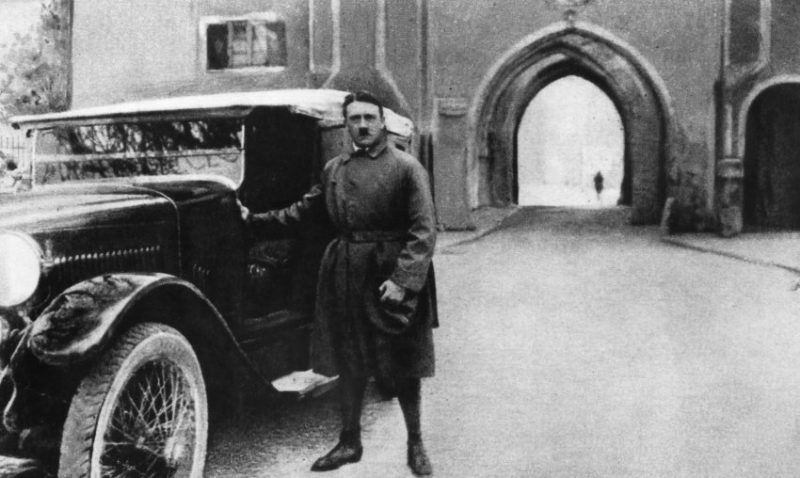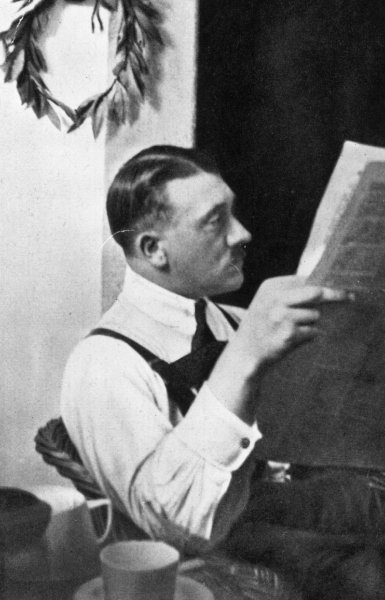
A 90-year-old photo, in which the future Nazi dictator appears shortly after leaving prison, still misleads us after all this time. The photo – one of the most famous images in which Hitler appears – was not taken outside of Landsberg Prison as it was previously thought. The future German dictator poses quite rigid next to a Mercedes, dressed in a black waterproof jacket. His hair is carefully arranged and the mustache that made him famous, while posing in front of a medieval gates.
The picture dates from December 20, 1924 and was made to mark Hitler’s release from Landsberg in Bavaria, where he spent nine months for treason, of a five years sentence. Landsberg Prison was where Hitler wrote his autobiography-manifesto, Mein Kempf. The picture was taken by Hitler’s photographer, Heinrich Hoffmann, and the image was supposed to announce his release to of all Germany, proclaiming his glorious “return”.
The photo has been used by the press in the past decades, with the explanation “Hitler leaving the Landsberg prison” as Hoffmann had written himself. It quickly became a very known image, especially after Hitler reconstructed this scene for Hoffmann, after his appointment as Chancellor.
But the image is not what it seems to be. It is actually a fake of the Führer.

The Landsberg Fortress still exists today and is still a prison, but it never had a massive medieval gate like the one in the picture. Moreover, the building dates from…1910, not from the Middle Ages. The gate in the photo is actually Bayertor – the so-called Bavarian Gate, the southern entrance in the old town of Landsberg. So where does the false explanation come from?

It is said that Hoffmann, who came from Munich to greet Hitler out of prison, wanted to capture this historical moment for posterity, but a prison guard had forbidden him to take pictures and threatened to confiscate his device. Frustrated, Hoffmann drove to Bayertor and asked Hitler to pose there. Confessing it in his memoirs, he said he made the decision because that location had more of a fortress atmosphere.
The press, from then and now, took Hoffmann’s explanation, some even adding false details of the story by writing titles such as “The Fortress Gates have opened”. Since then, everyone thinks that the Landsberg prison has such an imposing gate at its entrance.

In the big story of the Nazism, this is seen ,of course, as a minor detail, a seemingly insignificant correction in a much bigger picture. However, it illustrates a key aspect of the whole story. It shows that Hitler and Hoffmann were not only well aware of the political importance of the image, but were also willing to manipulate the truth in the process. In an era in which most politicians were not concerned with such seemingly ephemeral matters, the photo Hoffmann took marks the beginning of a new age. It was the first step towards what we would call today image management, through which Hitler and Hoffmann built carefully and thoroughly, the Führer’s public image, a campaign started in the 20s and ended only with his death.